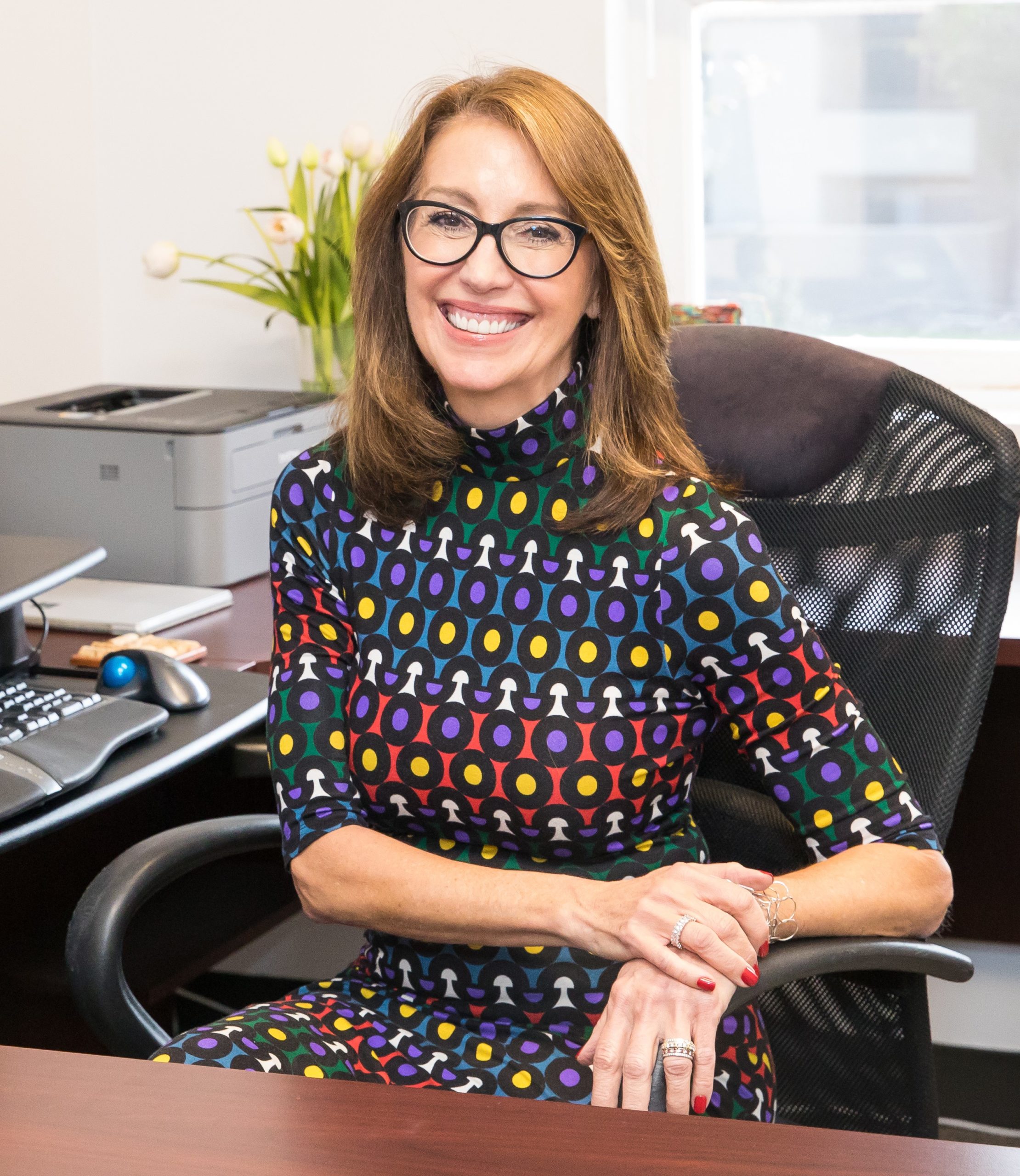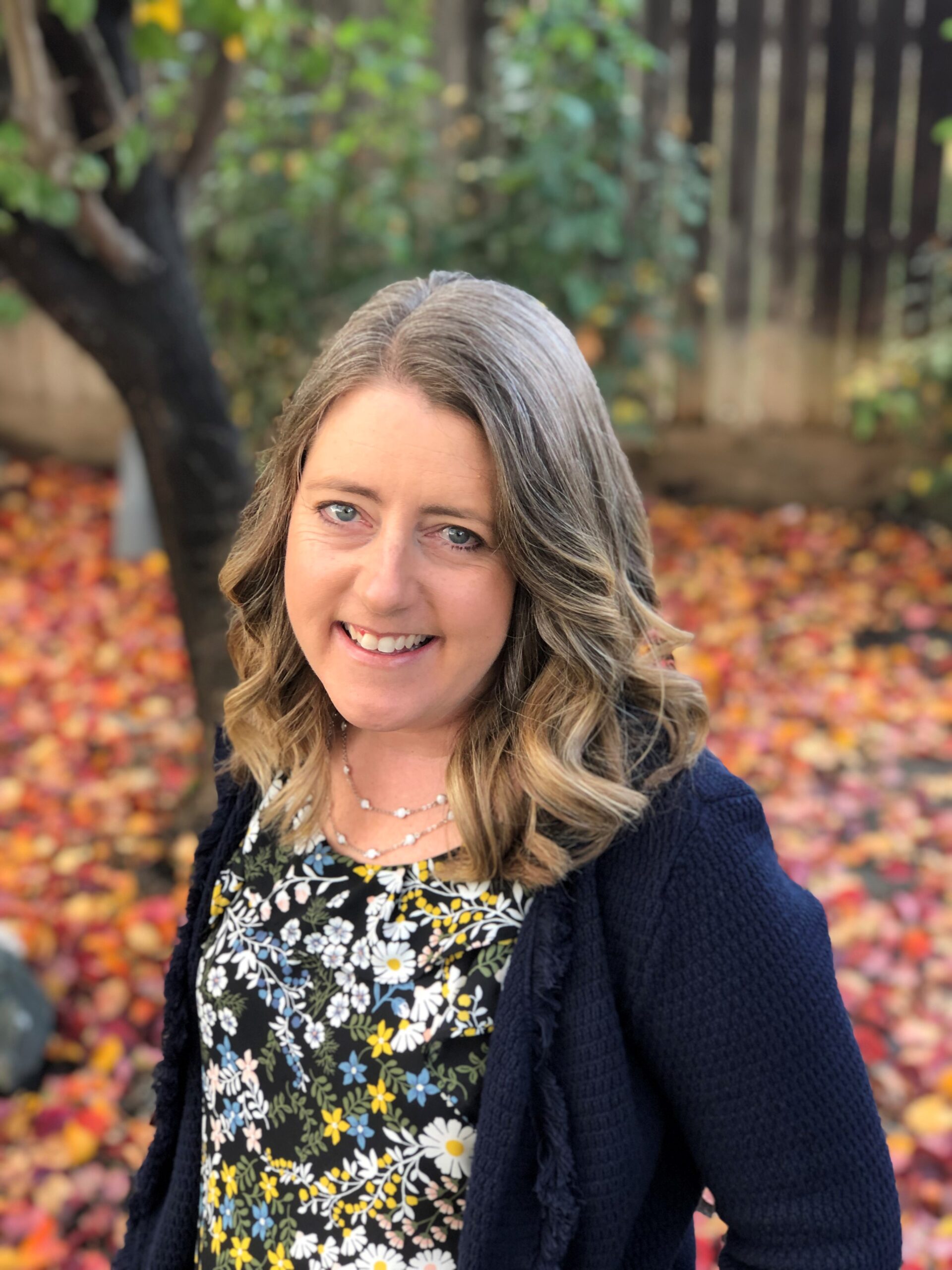PFAS chemicals (or per- and polyfluoroalkyl substances) are an emerging issue in the insurance industry. Increasing litigation, proposed regulations and scientific studies indicate that PFAS may be more concerning than originally understood. The Environmental Protection Agency’s (EPA) newly proposed drinking water standard, announced on March 14, 2023, is one of the many PFAS-related actions that state, federal and international regulators may take this year.
PFAS are synthetic chemicals present in food packaged materials, commercial household products, nonstick cookware, firefighting foam, drinking water and various other products. Due to their persistence and resistance to degradation, these "forever chemicals" are challenging to remediate. Cleanup can be challenging as PFAS can travel long distances and are highly stable and mobile in the environment. Studies are still underway to determine the best cleanup and remediation methods for PFAS contaminated waste. Exposure to PFAS has been associated with harmful health effects in humans and animals.
The EPA's proposed regulation would mandate that public water systems monitor for six varieties of PFAS and alert the public if concentrations surpass regulatory thresholds. According to the EPA, the new rule, if approved, “will prevent thousands of deaths and reduce tens of thousands of serious PFAS-attributable illnesses.”[1] According to the National Conference of State Legislatures, more than 20 states have proposed or adopted limits for PFAS in drinking water and states have also passed legislation to require monitoring for PFAS in public drinking-water systems.
According to some industry experts, the increasing exposure to PFAS represents a liability risk that could be as significant as that posed by asbestos. PFAS, like asbestos, are difficult to eliminate once they are released into the environment and have high costs associated with remediation.
What Do the Proposed Changes Mean?
The proposed changes would expand the regulatory oversight of the EPA over PFAS in several meaningful ways. The EPA would have the authority to order the investigation and remediation of sites suspected of containing those chemicals. Additionally, the EPA would be empowered to seek financial restitution from responsible parties to recover costs associated with remediating. And the EPA would be able to reopen sites that had already been remediated for additional investigation of PFAS.
The proposed regulatory direction creates an opportunity for industries to proactively plan for and be better equipped to respond to forthcoming regulations. By taking a proactive approach, businesses can make more informed decisions regarding remedial strategies and solutions around PFAS.
What Should Clients Do?
Organizations deemed responsible parties at PFAS impacted sites could be liable for cleanup costs. And new (likely more stringent) regulations will result in facility-specific discharge limits and sampling requirements (even perhaps for previously closed sites). This could have a major impact on public entity utility districts that are responsible for complying with drinking water standards, as well as subsequent PFAS-related exposures. Aviation, highway emergency response and firefighting operations should prepare to reduce or transition away from AFFF (aqueous film forming foam).
Clients should be monitoring regulatory changes related to PFAS, as well as state and federal enforcement actions and litigation outcomes while staying engaged with their environmental attorneys and engineering consultants.
Pollution Liability & Site Pollution Policies
Because the handling of PFAS exposures is a developing story in the insurance industry, everyone including insurers, brokers, and public entities will need to review current and past PFAS exposures, controls and policies.
Clients should assess their insurance coverage, specifically the pollution liability policy language governing or excluding PFAS. Pollution liability policies are an important risk management tool for property owners, and site pollution policies provide coverage for cleanup of unknown pollution conditions, third-party bodily injury and property damage and legal defense expenses associated with covered claims.
The new EPA rule and the extent of contamination and estimated high costs to clean and treat drinking water has led carriers to become increasingly hesitant to provide coverage for PFAS in these policies. We are seeing general liability policies that have responded by implementing broad PFAS exclusions. Coverage may still be available for properties where PFAS use is contingent or where testing has been conducted to affirm no existing contamination. One environmental insurance carrier has instituted a PFAS questionnaire as part of its underwriting process to comprehensively evaluate this exposure, and if all questions fundamentally verify no historic or current use of PFAS or current contamination (from onsite usage or offsite migration), the exclusion can be removed. While subsurface evaluation is recommended to obtain the best coverage, testing can also trigger reporting requirements to regulatory agencies, which can then require costly remediation, making this a tricky decision (which should only be made in consultation and coordination with legal, engineering and risk management teams).
Ultimately, concerned entities should review each situation with an environmental consultant and an insurance broker with extensive expertise in the highly specialized and dynamic site pollution liability marketplace to determine the best course of action.
[1] https://www.epa.gov/sdwa/and-polyfluoroalkyl-substances-pfas#:~:text=The%20proposed%20PFAS%20NPDWR%20does,of%20serious%20PFAS%2Dattributable%20illnesses.
*The views and opinions expressed in the Public Risk Management Association (PRIMA) blogs are those of each respective author. The views and opinions do not necessarily reflect the official policy or position of PRIMA.*

By: Karen Caterino, MBA, ARM-P
Senior Vice President, Alliant Insurance Services, Inc.
Summary of Qualifications
Karen joined Alliant Insurance Services in 2021 and has been in the industry for over 23 years in various positions involving healthcare, risk management and insurance. Prior to joining Alliant, Karen worked at a global insurance brokerage as the Center of Excellence Leader for the western region public sector and higher education practice. Karen also spent 8 years in public service, serving as a city senior benefits/risk analyst and as a state risk manager. She is an active member and presenter with PRIMA and STRIMA and hosts a regular podcast series “Igniting Next Gen” for careers in risk and insurance.
Responsibilities
In her role, Karen works with Alliant colleagues and clients, utilizing her knowledge and understanding of their unique risk and insurance needs to optimize risk management and brokering solutions. Her focus is on leading public entity, education and pooling business growth and development initiatives. Her specialty is casualty line placements. Her background in risk management and insurance, consultative sales leadership, innovative program development and client team management is helping Alliant develop deeper client relationships while delivering excellence to the client experience.
Business Experience
23 years working in risk management and insurance.
ERM Experience
Helping public entity clients implement ERM, advising on integrating business strategies designed to mitigate or optimize organizational enterprise risk.
Professional Affiliations
PRIMA, STRIMA, NV RIMS, AZ PRIMA, OR PRIMA
Education
Karen graduated with her bachelor’s degree from Roanoke College, Salem VA and from University of Phoenix with her MBA. She has an Associate in Risk Management-Public Entities (ARM-P), is a Certified Public Manager®(CPM) and Certified Government Benefits Administrator (CGBA) and is currently a CPCU® candidate.
As a recipient of the PRIMA scholarship, I was given an amazing opportunity to interact with industry professionals, meet various firms and better understand the importance of networking. As a student, I felt as if I was thrown into a new world. Thankfully, PRIMA provided us with the wonderful help of mentors and staff for a stress-free transition. Everyone was incredibly kind and generous with the many lessons I gained from each interaction. Even more so, I had the chance to attend a few learning sessions which discussed social inflation and risk pooling to name a few.
I believe the convention hall was one of my favorite parts of the trip. It was interesting to see the setups of the many companies with piles of merch they brought. I learned, however, that the companies with the best merch created a networking hotspot. Tons of people would flock around the booth and start up conversations. The risk managers, brokers, software engineers and others all have something to gain from one another.
The different reasons why people attend the conference became evident. We spent a week in a bubble of events; some for learning and others for enjoyment. As I listened to the conversations, I could hear brokers discussing with risk managers from across the country. The PRIMA conference, from a networking perspective, provided public risk professionals with an opportunity otherwise seemingly unattainable.
Everyone in this industry, no matter how experienced, has something to learn from others. Most conversations took place between risk managers from different cities discussing problems and solutions they encountered. Working together, the PRIMA community betters itself to improve public risk management collectively.
Previous to the conference, my knowledge was fairly limited to private risk. I had no idea how important the role of the risk management department in cities was. After many conversations, I gained a deeper understanding of why many risk managers self insure, form risk pools or select to purchase insurance. Even more important than insurance is risk mitigation. The PRIMA conference was a location in which risk managers shared techniques and strategies they use to reduce the risk in their cities.
Additionally, I was able to network with the other student scholarship recipients. It was great to have the shared experience and build future industry relationships. Traveling as a group the entire week, we became close over our shared interests. The networking happy hours were especially enjoyable to build bonds as we tasted great food and listened to the live band.
This conference will hopefully be the first of many! It was an experience I will never forget, and it encourages me to push on in this industry.
*The views and opinions expressed in the Public Risk Management Association (PRIMA) blogs are those of each respective author. The views and opinions do not necessarily reflect the official policy or position of PRIMA.*

By: Maxwell Wozniak
Risk Management and Insurance Major, St. John's University
Maxwell is a freshman in the business honors program, studying risk management and insurance at St. John’s University. Outside of his academics, he is a senator representing the business school in the student government on campus. Additionally, he is a member of the ambassador program, which gives him the opportunity to represent his university to prospective students. Most importantly, he holds the executive board position, Director of Internal Relations, with Gamma Iota Sigma. This organization has truly shaped his first-year experience by providing him with an outlet to learn outside the classroom by means of site visits, conferences and networking events. He received the Platinum Membership Award last fall for demonstrating the highest commitment to the chapter. In his free time, he enjoys golfing and getting involved on
In a world where many shy away from reading books or thinking about insurance policies, only the brave embrace the idea of turning on convention with a real “career." As an eager student seeking professional growth, I had the privilege of attending the Public Risk Management Association 2023 Conference held in Long Beach, California through a student scholarship opportunity. Better referred to as #PRIMACON23, it was a four-day event that brought together education, networking opportunities, career-building advice and entertainment
Keynote Speakers
The most insightful piece that was provided in the PRIMA conference was three amazing keynote sessions. To start esteemed industry experts Bob Wilson, Mark Pew and Ya'Sheaka Williams shared their invaluable insights, sparking meaningful conversations and providing guidance on fostering a strong and supportive network within the risk management field.
During the PRIMA 2023 Conference, one of the keynote speakers who left a lasting impression was Sonia Aranza. Her insightful session shed light on the profound impact of unconscious bias on risk management. Unconscious bias refers to the unconscious associations and stereotypes that affect our perceptions, decisions and actions without our conscious awareness. Aranza delved into how these biases can seep into risk management processes, potentially leading to skewed assessments, limited perspectives and overlooked vulnerabilities. By recognizing and addressing our unconscious biases, risk managers can enhance the effectiveness of their strategies and decision-making, fostering a more inclusive and comprehensive approach to risk management.
Speaker and preformer Jon Petz's message of the small moments are what serve to be remembered and also serves as a powerful reminder that risk management but business in general. It is about the human element—the connections we build, the empathy we show and the value we place on each individual's contributions. By embracing the significance of simple moments, risk management professionals can elevate their work, foster stronger relationships and ultimately create a culture of excellence and resilience.
What are the Public Risks?
Public entities, such as townships and cities, face a wide range of challenges that need to be addressed with risk management. Compliance, police liability and city workers' compensation are significant areas that require attention. Ensuring adherence to laws and regulations, mitigating risks associated with law enforcement activities and providing adequate support for city employees injured on the job are crucial aspects of managing these risks. By effectively addressing these areas, public entities can create a safer and more resilient community for both employees and the public.
Apply Risk Management Tools
During the PRIMA 2023 Conference, I had the opportunity to explore the tools and strategies that city risk managers have at their disposal and their outcomes. One tool that emerged was the use of external auditing. By bringing in auditors, risk managers can gain impartial and expert insights into potential vulnerabilities within their organizations. This helps in identifying areas for improvement and enhancing risk management practices. Additionally, actively participating in board meetings and engaging with stakeholders allows risk managers to stay informed, align their strategies with organizational goals, and build strong relationships and communication within their communities.
The People of PRIMA
The best aspect of the PRIMA 2023 Conference was the opportunity to connect with a diverse and passionate community of professionals. From the attending risk managers, brokers and adjusters to students like myself, the conference had a wealth of experience and expertise. This enabled the trip to exeed my expectations and become one of my favorite professional experiences to date.
*The views and opinions expressed in the Public Risk Management Association (PRIMA) blogs are those of each respective author. The views and opinions do not necessarily reflect the official policy or position of PRIMA.*

By: Cole Epler
Insurance and Risk Management Major, Olivet College
Cole is an insurance and risk management student at Olivet College. Hs is passionate about the insurance industry and its ability to protect individuals and businesses. Throughout his academic career, Cole has immersed himself in learning about the various types of insurance policies, risk management strategies and industry regulations by studying two AICPCU courses. He has also sought out opportunities to expand his knowledge beyond the classroom, such as attending industry conferences and joining professional organizations. Cole’s goal is to apply what he has learned to help people and businesses manage their risks effectively. He is excited to continue his education and embark on a fulfilling career in the insurance industry, where he can make a positive difference in the lives of others.
Accidents happen. That’s why it’s imperative for organizations to establish a robust incident reporting process to address any accident that may occur, including commercial auto, general liability, property, student accidents and workplace injuries.
Whether you’re looking for a partner to build the framework of your incident reporting process or to enhance your current infrastructure, ensure that your partner puts compassionate people and innovative technology at the center.
By creating your processes around these components, you streamline the collection, management, accuracy, and secure access and delivery of information, transforming your organizational reporting.
Compassionate People
When looking for an incident reporting partner, ensure that the organization is made up of compassionate people.
Getting into an accident brings uncertainty. Utilizing a reporting system supported by people who demonstrate care and expertise to address accidents relieves this stress.
Compassionate people make reliable partners who will nurture, guide, and support your organization. This extends to your employees, who report incidents, and to your risk management team, who will benefit from a partner who helps them to enhance and refine the reporting process.
Why else are compassionate people a crucial component in selecting a risk reporting partner for your organization? These individuals truly care about your organization and improving its experience. They deliver exceptional service that surpasses expectations by attentively listening to your needs and continuously striving to enhance your processes.
Innovative Technology
Equally vital to identifying compassionate people within your risk reporting partner, is ensuring the partner is backed by innovative technology.
So, what does this entail when evaluating a potential risk reporting partner? The ideal partner will provide technology that bolsters the efficiency and accuracy of your processes. Such a partner continuously improves their technology, implementing updates to enhance your experience and yield improved results.
Moreover, this technology should incorporate robust security measures to safeguard your organization and its people. These measures encompass the formulation of comprehensive business continuity and disaster recovery plans (BCP/DRP) and adherence to regulatory standards such as HiTech and SOC II.
The Impact
Together, compassionate people and innovative technology will profoundly enhance your accident reporting experience. A partner who provides these crucial components will aid in streamlining the collection, management, and secure access and delivery of information, transforming your organizational incident reporting.
Claims Collection
Technology created by compassionate people invariably prioritizes the user experience. Your partner should offer technology that allows users to report incidents via their preferred channels, whether that be through phone, text, or virtual chat, thereby facilitating more prompt and accurate reporting.
Secure Access to Claims Information
A partner that utilizes innovative technology provides robust security, ensuring the secure transmission of data and information. Consequently, this instills confidence in users reporting accidents.
Furthermore, this security ensures that administrators access reports and supplementary information in a secure manner, strictly adhering to a need-to-know basis, thereby safeguarding their employees and the organization as a whole.
Claims Management
With simple, yet secure, access to risk reports, your risk management team has the information it needs to efficiently address and close claims.
However, it is essential to ensure that your partner properly supports the collection of the information you need during the reporting process. Your partner should allow you to add specific questions that will enable stakeholders to receive direct and timely answers.
*The views and opinions expressed in the Public Risk Management Association (PRIMA) blogs are those of each respective author. The views and opinions do not necessarily reflect the official policy or position of PRIMA.*

By: Debra Spamer
Chief Growth Officer, Company Nurse
Summary of Qualifications
Debra is chief growth officer for Company Nurse and Lintelio, adding more than 25 years of management experience as well as expertise in the areas of sales development and management, marketing, contract negotiations and customer relations.
Debra joined Company Nurse in the spring of 2014 and Lintelio at its inception in 2021.
Responsibilities
Debra is responsible for revenue and business enhancement activities including strategic partner development, as well as expansion and continuous improvement planning for major client relationships utilizing the brand’s nurse triage services.
Business Experience
Debra previously served in vice president roles for GreaterGood.com, Incentive Logic, LiveWorld and Family Education Network.
In addition, she was the executive director of brand marketing and corporate alliances for International Cruise and Excursions. Earlier in her career – in another arena – she was the
manager of new media sales at the Chicago Sun-Times.
Education
Debra received her B.S. in advertising from the University of Illinois at Urbana-Champaign.
Demands facing the public entity sector remain high, and competition for workers is fierce. Many organizations today are tasked with providing more services with fewer resources. These conditions have raised interest and put a spotlight on the value of ergonomics.
Simply stated, ergonomics involves fitting the demands of a job to a worker’s capabilities. By ensuring the task, equipment and environment are optimized for the employee, not only is the potential for injury reduced, but also productivity may increase.
An Ergonomic Surge
The onset of the pandemic forced the overnight establishment of many home offices and the need to ensure proper set-up of equipment and workstations. While an ergonomic surge developed among those with office responsibilities, interest in ergonomics also increased for those in the field performing more physical and arduous tasks. Regardless of the working environment, ergonomics can prevent injury due to poor position, excessive force or high repetition. Such adjustments and practices are designed to dull the risk and effects of injury, particularly those arising from cumulative trauma that develop over time.
The Impact of Stress
In recent years, many ergonomic initiatives have resulted in improved equipment set-ups, the addition of accessories or scheduling realignments. However, if an organization believes they have made significant efforts toward reducing their physical risk factors and would like to take its ergonomic program a step further, consider evaluating the impact of stress on employees. Just as with physical risk factors, stress also involves an imbalance between the demands of a job and the worker’s capacity to cope.
According to the Occupational Safety and Health Administration (OSHA), an estimated 83% of U.S workers suffer from work-related stress. Moreover, it is estimated that nearly one in five US adults live with a mental illness.
Such mental conditions can produce physiological responses in employees that can impact their daily work and make them more susceptible to injury. For example, prolonged stress can increase muscle tension. If this is coupled with repetitive tasks that require force, then it could increase the risk of developing a musculoskeletal disorder. Additionally, stress can have a negative impact on sleep. Insufficient sleep can lead to increased error rates that in turn, contribute to higher rates of rework, job repetition and increased risk. Further, stress can have a negative impact on the body’s circulation; and, this may impede an employee’s performance or ability to heal from a cumulative disorder.
These observations point to the need for frontline managers and supervisors to identify employees exhibiting signs of stress and take steps to mitigate stress-inducing conditions. Signs of stress may be seen in increased absences or tardiness, declining performance or productivity, limited engagement or communication, and reduced physical capabilities or daily functioning.
Protecting Employee Well-Being
In these instances, there are steps an organization can take to maximize the effectiveness of their existing ergonomics program and protect overall employee well-being:
- Create a safe space or working environment where employees are comfortable sharing what is driving stress and what steps can be taken to alleviate it.
- Make the employee aware of benefits that are available to them. Many organizations offer an employee assistance program (EAP) or provide counseling for little or no fee as part of their benefits package.
- Introduce ergonomic practices that allow for increased job rotations, workstation adjustments, or more frequent rest periods. Both mind and body benefit from breaks throughout the day.
- Allow the employee to have a sense of autonomy and control over work and scheduling to the extent possible. This includes encouragement to share ideas and suggestions that will improve the workplace and work experience.
- Ensure the organization is complying with the Americans with Disabilities Act, Occupational Safety and Health Act, and any related federal or state statutes or mandates.
Ergonomic enhancements at the workplace are an excellent way to demonstrate care and concern for employees. However, it is important to remember that ergonomics, like any injury prevention or recovery program, should address both the physical and mental health needs of employees. Only then can ergonomic principles and practices be maximized to achieve improved outcomes and results.
Source: Workplace Stress - Overview | Occupational Safety and Health Administration (osha.gov)
*The views and opinions expressed in the Public Risk Management Association (PRIMA) blogs are those of each respective author. The views and opinions do not necessarily reflect the official policy or position of PRIMA.*

By: Lisa Orr, MSIE, CPE
Senior Human Factors Consultant, Sedgwick
Summary of Qualifications
Lisa, a certified professional ergonomist, is a senior human factors consultant with Sedgwick Claims Management Services, Inc. (Sedgwick). Lisa has 28 years of experience providing loss prevention/human factors design and research services for a variety of industries such as manufacturing, healthcare, apparel, newspaper/publishing, banking/finance, retail, transportation and public entities. Consulting with local, regional, and national employers, she assists them in developing, implementing, and evaluating ergonomic program strategies. She specializes in the assessment of overall work processes, training, onsite evaluations and analytics.
Professional Affiliations
In addition to being a member of the Board of Certification in Professional Ergonomics, Lisa is also a member of the Human Factors and Ergonomics Society.
Education
Lisa graduated from the University of Nebraska, Lincoln with her M.S. in industrial engineering (specializing in human factors). Her B.S. degree in industrial engineering is from the University of Houston.

By: Mark Debus, MSW, LCSW
Clinical Manager, Behavioral Health, Sedgwick
Summary of Qualifications
As clinical manager of behavioral health services at Sedgwick, Mark leads a team of master’s level behavioral health specialists. His team consults with claims examiners and clients on complex recovery or psychiatric injury claims. They also work with injured employees who are struggling with the aftereffects of a workplace trauma or who are experiencing other types of psychosocial stressors in their lives. His team helps injured workers overcome barriers to treatment and improve motivation for successful return-to-work outcomes. In addition, he provides subject matter expertise on mental health issues as they relate to the workplace and management practices. Prior to Sedgwick, Mark worked in employee assistance (EAP) and the mental health field in crisis response services. Mark has a BA in psychology and communications from Marquette University and an MSW from the University of California at Berkeley. He is a licensed clinical social worker (LCSW) in Illinois.
CLICK HERE for Part 1
So, here’s the skinny, we have a crisis of unprecedented proportions in the property market and a very hard market for liability insurance especially for certain types of coverage such as sexual abuse and law enforcement but the third leg of our P&C stool is steady: workers’ compensation. The result of these crisis and ever rising costs are three fold:
- Your entity is spending more on your self-insured losses
- Your entity is spending more to transfer the risk to a pool, insurer or reinsurer
- Your entity has blown through reserves and needs to replenish the reserve account
That’s a tall order and the underlying factors which have created items 1-3 are not going away anytime soon. I would argue perhaps never. In other words, this isn’t something we can ignore and survive. So what can we do other than pay more for insurance?
I will share with you what my clients are doing and perhaps it can apply to your situation. First, and I want to be clear about this, our clients are doubling down on risk management and claims management. They are investing in technology to better understand the risk and potential prevention mitigation techniques. They are also attending PRIMA conferences and workshops to learn from one another.
Second, they are changing the way they cover events by transitioning to claims made for certain very volatile exposures, such as sexual abuse, civil rights and law enforcement. It is not realistic or sustainable to price and fund losses today that will be paid 10 or more years from now (other than workers’ compensation). No one predicted the type of nuclear verdicts we see nowadays, even as recently as a few years ago. How can an actuary tell you what you need to set aside to pay law enforcement claims in 2030 or 2035?
Third, they are looking at group and pure captives to fund for large retentions as the insurance industry withdraws from geographic regions and lines of coverage where underwriting profit is elusive to impossible. Captives do not offer the same benefits as they do to those in private sector but there are advantages that cannot be ignored. Not the least of which is they are regulated by a department of insurance while most pools and self-insured entities are not. Captives are to pools what the largest banks are to the banking system; they are safer because they are regulated.
Fourth, there are reinsurance financial structures that are utilized by the insurance industry to provide multiyear protection of large retentions (retentions greater than $2M). In addition, there is a reinsurance market underutilized by pools that leans more on finance and quantitative risk than qualitative. Pools should be talking to those companies. The capital markets which offer significantly greater amounts of capital are an untapped source for financing of certain large exposures such as catastrophic risk.
In summary, the decade of the 2020s has started with not one but two worldwide events: a pandemic and a war in Europe. And I don’t think the decade is done with us yet. The challenges before us will not be solved by the solutions of the eighties or nineties. It’s time to innovate again.
*The views and opinions expressed in the Public Risk Management Association (PRIMA) blogs are those of each respective author. The views and opinions do not necessarily reflect the official policy or position of PRIMA.*

By: John Chino, ARM-E, ARM-P, CSRM
Area Senior Vice President, Arthur J. Gallagher & Co.
John is enjoyed 40 years in the industry, all with Gallagher and has spent nearly his entire career in the public sector. He currently serves self-insured pools and large sophisticated self-insured public agencies. In addition, he is on the advisory board for the USC Risk Management Minor Program and frequently serves as a guest lecturer. John is a member of the faculty of the National Alliance of Insurance Education and Research where he teaches the Certified Scholastic Risk Management Program (CSRM). He is a course instructor for The Institutes and helps students to pass ARM exams.
The story begins with the interconnection of exposures, hazards, perils and losses. The world is in many ways smaller than it’s ever been and COVID-19 and supply chain disruptions are vivid examples of our joint vulnerabilities. The latest worldwide calamity is the inflation cycle, which is not unknown to third world and emerging economies but hasn’t been experienced by developed counties since the 80’s. Yet, here we are sharing a rising rate of inflation that shifts from one commodity to the next. These events challenge the insurance and reinsurance community as they grapple with having enough capital to pay losses and meet the needs of an expanding global economy.
Now let’s bring the discussion closer to home and specifically to how it impacts the public sector in the US. First, despite alternative risk techniques such as self-insurance and pooling we are still dependent on financing by a robust insurance industry. A business that is well capitalized but stretched to the limit. The pain is not unknown to public agencies as property losses know no boundary nor region. This is not your grandparent’s earthquake and flood events. We now have so many new terms for large scale property events they have their own language: bomb cyclones, atmospheric rivers are part of our lexicon. Hail the size of a Buick falls in Colorado and Texas freezes more than Iceland and on a far larger scale. The insurance industry refers to these as secondary perils, meaning NOT earthquake or hurricane. Secondary also means these events are random, unexpected and without precedent... other than they happen all the time.
Then there’s the liability situation which is reminiscent of the “wild eighties” when products liability and medical malpractice claims were the rage. The tidal wave of these claims and their ever growing impact was blunted by an insurance crisis and tort reform. The memory of these lessons has long been forgotten and the law schools are pouring out new graduates all looking to sue someone, anyone. If it wasn’t for personal injury attorneys advertising on TV and radio, there would be nothing to watch or listen to. Those newly graduated, wet behind the ear lawyers have a new tool in their arsenal and it’s called litigation funding. The way it works is investors back their efforts by paying their bills in the hope they will share the proceeds of the case. Litigation funding was once an informal affair with friendly investors but is now a sophisticated exchange of law firms and hedge funds with billions of dollars in the mix. This toxic mix of too many attorneys, advertising and litigation funding has fueled a new phenomenon referred to as social inflation. Essentially, social inflation is the cost of a society that has zero tolerance for certain types of offences such as sexual abuse, employment matters and anything to do with law enforcement.
I have already referred to earlier hard markets as a way to compare where we are today with earlier crisis. The hard markets of the 70’s. 80’s and even 2000 were worse and involved all lines of coverage indiscriminately. Not so in 2023, we have a very strong and stable workers’ compensation market. And, praise be that we do, as workers’ compensation is by dollar amount our largest spend as a percentage of property & casualty insurance.
*The views and opinions expressed in the Public Risk Management Association (PRIMA) blogs are those of each respective author. The views and opinions do not necessarily reflect the official policy or position of PRIMA.*

By: John Chino, ARM-E, ARM-P, CSRM
Area Senior Vice President, Arthur J. Gallagher & Co.
John is enjoyed 40 years in the industry, all with Gallagher and has spent nearly his entire career in the public sector. He currently serves self-insured pools and large sophisticated self-insured public agencies. In addition, he is on the advisory board for the USC Risk Management Minor Program and frequently serves as a guest lecturer. John is a member of the faculty of the National Alliance of Insurance Education and Research where he teaches the Certified Scholastic Risk Management Program (CSRM). He is a course instructor for The Institutes and helps students to pass ARM exams.
I do love a locker room. It smells like potential.
-Ted Lasso
Teamwork is the most important determinant for the success of any board. We all learn teamwork when we are young, in school, on an athletic field or around a game board. However, we rarely take the principles of teamwork into our board meetings. Here are some techniques to foster teamwork within a board of directors.
Foundations
If we consider a board as members of a sports team, the foundational documents for organization are akin to the rules of the sport. Board members must be aware of, if not conversant in, the founding or governing documents of their organization. This may include bylaws, organizational structure, policies and the like.
All boards should have a “Rules of Board Procedure” document that establishes the process of how votes are taken and agendas are set. Board members should also be aware of their relationship to the organization’s staff, and the structure of the insurance provided.
Two foundational pledges should be adopted to foster a solid foundation for board members and staff:
- A pledge to never surprise one another in public
- A pledge to never disparage one another anywhere
The board and organization should also mutually follow two foundational principles:
- Leadership through persuasion
- Reciprocal accountability
Like an athletic team, board members should have a clear vision of their overall purpose. This can take the form of a mission statement. One simple, yet iconic, example is that of the McLaren Formula 1 Team: “We exist to win."
Fundamentals
Fundamentals for any team are the crucial, repeated and everyday tasks. In our industry, the most fundamental task is building trust. Trust between the board and staff flows from a true understanding of the scope and limits of everyone’s role.
Therefore, onboarding, clear responsibilities, ongoing training and retreats are all critical. Making sure to balance educational time with conversational activities will help build those relationships.
Fundamental trust is also built in maintaining board-appropriate communications pathways. Any conflicts that arise should be discussed professionally and openly.
Functions
Like an athletic team taking the field, board meetings are where the foundations and fundamentals of teamwork are implemented.
Recruitment and time spent on your board’s composition is crucial. Having a blend of abilities, interests and backgrounds on your board will help develop a solid diverse team.
To function well as a team, the most impactful member is your board chair. The chair will represent the organization, run the meetings, and must, therefore, be most knowledgeable. Make sure to spend time with your board chair.
Professionally run meetings will likewise lead to success. A carefully structured meeting, utilizing a consent agenda, functional committees, and measured staff input, will help streamline meetings. Combined with the ongoing training fundamental, this will lead to shorter, more focused meetings. Spend time practicing and communicating meeting expectations.
Great teamwork is the overall goal. Your board and staff can work best together when fulfilling distinct roles but uniting together as a team.
*The views and opinions expressed in the Public Risk Management Association (PRIMA) blogs are those of each respective author. The views and opinions do not necessarily reflect the official policy or position of PRIMA.*

By: Wes Crago
Program Administrator, Clear Risk Solutions
In 2003, Wes assumed the post of city administrator for the City of Ephrata, WA. Wes’ greatest strength is knitting together powerful and long-lasting teams that go on to achieve great successes. Wes is well-experienced in crisis management, forms of government and public communications.
While city administrator, Wes also served on the board of directors for the Cities Insurance Association of Washington, a 200+ member municipal risk pool. There he led the board for a decade as chairman; negotiating mutually successful agreements with state officials, regulators and many large and diverse insurance matters. In 2019, Wes accepted the position of city administrator for the City of Spokane, WA. While short, it was an exciting and rewarding experience.
In late 2020, Wes assumed the role of program administrator for Clear Risk Solutions. He oversees the two municipal pools; one county group, and the other comprised of cities and special districts.
The four commonly designated “silent killers” are heart disease, diabetes, hypertension and prostate cancer. The one silent killer which is not listed is the failure to return to work after an industrial accident. Studies have shown that failure to return to work results in reduced life expectancy and is usually a severe financial catastrophe for injured workers and their families.
When someone collapses in front of you, it is a life-threatening event which requires immediate action. Call 911 and start CPR immediately. Employers, applicant attorneys and many claims adjusters do not treat the potential loss of a job or occupation from an industrial accident with the same sense of urgency as we do a heart attack. We should.
Studies have shown that every single day delay in returning to work increases the likelihood of permanent loss of the job and the occupation. On a positive note, studies have shown that early return to work significantly improves the speed and scope of recovery after an industrial accident. Light and modified duties are the key to faster recovery as well as significantly reducing the cost of workers' compensation.
One of the biggest barriers for injured workers to return to work is the fear of re-injury. Many employers have the same fear. This is one of the reasons that many employers do not want the injured worker to return unless the doctor has released the patient to full duties.
There are several ways for employers to help overcome the barriers that injured workers experience when they face returning to work.
The first is that all parties have to set the goal of returning to work.
The second is to provide the treating doctor and claims examiner with an accurate physical job description. It is always better when everyone knows the ultimate recovery goals.
The third is to inform the injured worker, the doctor and the claims adjuster that there are light or modified duties available. Provide accurate information on what duties are available or get the restrictions from the doctor and then design the job within those restrictions.
The fourth is to have the front-line supervisor keep in touch with the injured worker and provide gentle encouragement for getting back to work.
The fifth is to make sure that the employee is complying with the limitations. Many times, the employee does not want to be singled out or wants to keep the production line going so they go beyond their limitations. The front-line supervisor needs to assure the employee that the limitations will not last and that they should always follow the doctor's instructions.
As usual with all things in workers’ compensation, communication and encouragement are the keys to success.
*The views and opinions expressed in the Public Risk Management Association (PRIMA) blogs are those of each respective author. The views and opinions do not necessarily reflect the official policy or position of PRIMA.*

By: William Zachry
Senior Fellow, Sedgwick
William was appointed a senior fellow of the Sedgwick Institute in 2017 and is known throughout the risk management industry as a champion of workers’ compensation reform. He serves on the board of the State Compensation Insurance Fund, California’s largest provider of workers’ compensation insurance. William was appointed to the board by Gov. Arnold Schwarzenegger in 2010 and reappointed by Gov. Jerry Brown in 2014. He also participated in the design and implementation of landmark regulations to bring greater equity to the California workers’ compensation system.
Previously, William served as group vice president of risk management for national grocery retailer Safeway/Albertsons. His 15 years of leadership there earned him recognition as Business Insurance’s Risk Manager of the Year in 2014 and recipient of the California Coalition on Workers’ Compensation’s Tim East Award in 2016.
Often, the last thing a company wants to address immediately following a large property loss is an insurance claim. However, the claims preparation process is vital to ensuring that a business survives a large property loss. Throughout my career of measuring and preparing large property losses for insureds, I have learned many lessons to ensure the claims process goes smoothly and efficiently. Below, I outline six critical steps to take prior to and following a loss to increase the chances of a favorable claims outcome.
Prior to a loss:
- Ensure your reported values are accurate
To place insurance, each year a company reports the annual values of the property, inventory and business interruption risk to insurers. Inaccurate values can lead to several difficult outcomes, including co-insurance penalties, insufficient limits of insurance or inaccurate deductibles.
- Assemble your claim team prior to a loss
Internally, identify key personnel from risk management, facilities, operations, sales, accounting, insurance broker, etc. Externally, take the opportunity to interview, vet and contract with vendor partners including restoration companies, claim preparation firms and coverage counsel. Following a wide-spread event, these resources quickly become fully utilized and having relationships in place will result in prioritized response and recovery.
- Fully read and understand the policy language
Work with your insurance broker to understand the policy, coverage and any potential areas of concern. Once a loss has occurred, it is not the time to learn what coverage you have (or don’t have).
Following a loss:
- Communicate externally and internally
Early on, it is important to provide insurers with a preliminary estimate of total loss so that the insurance reserve can be properly set. This will develop into a well-documented insurance claim submission and be shared with insurers. It is equally important to identify potential recovery issues with internal management, including insurance sublimits, deductibles or potential policy coverage issues.
- Make decisions in a timely manner
Often after a catastrophic event, the insured may decide to make changes to the building or operations while rebuilding. While most understand the increased cost of upgrading will not be covered by insurance, it is important to also highlight that any extension to the restoration period will be excluded from a business interruption recovery. Of course, the insured may opt to make the change or investment regardless but should understand the implications to their insurance recovery.
- Establish a claim preparation timeline and communication protocols
Following a loss, it is important to keep regularly scheduled meetings with the team (risk, operations, finance, claim preparer, etc.) and the insurance company’s representatives (adjuster, equipment or building consultants, claim auditor, etc.). Develop communication protocols and assign a point person for such communications. This ensures timely communication and discussion of key decisions and issues. It also keeps the insurance adjustment team focused on your claim, which may be one of many following a wide-spread event.
By following these steps, a business will be in position to maximize insurance recovery in a timely manner, allowing it to get back to running its business.
*The views and opinions expressed in the Public Risk Management Association (PRIMA) blogs are those of each respective author. The views and opinions do not necessarily reflect the official policy or position of PRIMA.*

By: Jason Cables, CPA, CFE, CFF
Managing Director, Ankura Consulting Group
Summary of Qualifications
Jason has over 20 years of experience in the analysis, measurement, preparation, submission and settlement of insurance claims for companies impacted by catastrophic events.
Responsibilities
Jason focuses on managing client engagements, including business interruption, property damage, cybersecurity, builder’s risk, product recall, product liability, fidelity and FEMA claims for corporate policyholders. Jason also specializes in business interruption values assessments for corporate policyholders, lost profits claims, litigation support and expert witness services.
Business Experience
Throughout his career, he has prepared approximately 300 insurance claims, most of which settled in the normal adjustment process. His industry experience includes hospitality, real estate and land development, retail, manufacturing, pharmaceuticals, consumer goods, chemicals and petrochemicals, food processing, healthcare, and warehousing, among others.
Professional Affiliations
- Association of Certified Fraud Examiners (ACFE)
- Illinois & Texas CPA Societies (ICPAS, TSCPA)
- American Institute of Certified Public Accounts (AICPA)
- Houston & DFW Risk and Insurance Management Society (RIMS)
- Young Risk Professionals (YRP)
- Board Member - Houston Risk and Insurance Management Society Chapter
- President of the Houston Illini Club (Alumni Organization)
Education
- BS, Accountancy, University of Illinois at Urbana‐Champaign
- Certifications:
Certified Public Accountant (CPA)
Certified Fraud Examiner (CFE)
Certified in Financial Forensics (CFF)
Licensed CPA in Texas & Illinois











